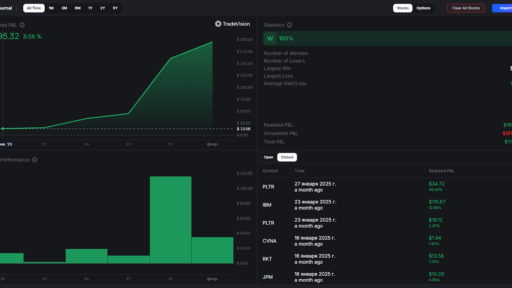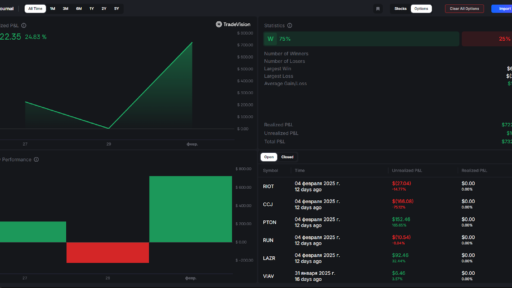Are you tired of seeing your investments stagnate, failing to deliver the returns you were promised? Look no further than our comprehensive guide on how to skyrocket your investments. In this article, we will reveal the proven strategies and techniques that savvy investors use to generate impressive returns on their investment portfolios. Whether you’re a seasoned investor or just starting, this guide will provide you with the knowledge and tools you need to take your investments to the next level.
With expert insights and practical tips, our guide covers a wide range of investment options, from stocks and bonds to real estate and cryptocurrency. We’ll explore the importance of diversification, teach you how to analyze market trends, and highlight the potential pitfalls to avoid. By the end of this guide, you’ll have the confidence and know-how to make informed investment decisions and capitalize on lucrative opportunities.
Don’t let your hard-earned money sit idle. Start maximizing your investment potential today with our ultimate guide to skyrocketing your investments.
Understanding Different Investment Options
Investing is a broad field, and understanding the various options available is crucial for maximizing your returns. The most common investment vehicles include stocks, bonds, real estate, and mutual funds. Stocks represent ownership in a company and offer the potential for high returns, albeit with higher risk. When you invest in stocks, you’re essentially betting on a company’s growth and profitability, which can fluctuate significantly. Understanding how to analyze company performance and market conditions is essential when venturing into stock investments.
Bonds, on the other hand, are often considered safer than stocks. They represent a loan made by the investor to a borrower, typically a corporation or government. The investor receives regular interest payments and gets the principal back at maturity. While bonds generally yield lower returns compared to stocks, they serve as a stabilizing force in an investment portfolio, especially during market downturns. Investors must assess credit ratings and interest rate environments when choosing bonds to ensure they align with their investment goals.
Real estate is another popular investment option that can provide both income and appreciation. Investing in rental properties or real estate investment trusts (REITs) allows you to benefit from property value increases and rental income. However, real estate investing requires a significant capital outlay and involves ongoing management and maintenance responsibilities. Evaluating market trends and property values is vital to ensure your investment yields positive returns over time.
Setting Your Investment Goals
Setting clear investment goals is the first step toward successful investing. Whether you’re saving for retirement, a major purchase, or simply looking to grow your wealth, having specific and measurable goals can guide your investment decisions. Start by determining your time horizon; for example, retirement savings may require a longer-term perspective, while saving for a home within the next few years may necessitate a more conservative approach.
Next, consider your financial needs and aspirations. Setting both short-term and long-term goals will help you allocate your resources effectively. Short-term goals might include saving for a vacation or an emergency fund, while long-term goals could focus on wealth accumulation or funding your children’s education. By prioritizing your goals, you can create a tailored investment plan that aligns with your financial objectives.
Lastly, make sure your investment goals are realistic and achievable. They should consider your current financial situation, income, and expenses. Regularly revisiting and adjusting these goals as your circumstances change is essential. This practice will not only keep you motivated but also ensure that your investment strategy remains relevant and effective in achieving your desired outcomes.
Risk Tolerance and Diversification
Understanding your risk tolerance is a vital component of your investment journey. Risk tolerance refers to your ability and willingness to endure fluctuations in the value of your investments. Factors influencing your risk tolerance include age, income, investment experience, and personal comfort with market volatility. Younger investors may have a higher risk tolerance since they have more time to recover from potential losses, while those nearing retirement might prefer a more conservative approach.
Once you have established your risk tolerance, diversification becomes crucial. Diversification involves spreading your investments across different asset classes, sectors, and geographical locations to mitigate risk. By holding a mix of stocks, bonds, real estate, and possibly alternative assets, you can shield your portfolio from significant losses if one sector underperforms. This strategy allows you to pursue higher returns while maintaining a balanced approach to risk.
It’s important to regularly review your diversified portfolio to ensure it continues to align with your risk tolerance and investment goals. Market conditions and personal circumstances can change, warranting adjustments to your asset allocation. Striking the right balance between risk and reward through diversification will help you maximize your returns while protecting your investments from unforeseen downturns.

Creating a Budget for Investing
Creating a budget is a foundational step in any investment strategy. A well-structured budget not only helps you track your income and expenses but also identifies how much money you can allocate for investments. Begin by assessing your monthly income and subtracting essential expenses such as housing, groceries, and debt repayments. The remainder is what you can consider for your investment endeavors.
After determining your disposable income, categorize your spending into needs, wants, and savings. Allocate a portion of your income toward savings and investing. It’s advisable to set aside funds for both short-term and long-term investment opportunities. Creating a separate investment account can help you manage your funds more effectively and keep your investment goals in focus.
Additionally, consider automating your investment contributions. Many financial institutions offer automatic transfers to investment accounts, making it easier to stick to your budget. By treating your investments as a regular expense, you can consistently build your portfolio over time, taking advantage of dollar-cost averaging and compounding returns.
Researching and Analyzing Investments Opportunities
Conducting thorough research is imperative when exploring investment opportunities. Start by identifying potential investments that align with your goals and risk tolerance. Utilize financial news outlets, investment websites, and market analysis reports to gather relevant information. Understanding industry trends and economic indicators can provide valuable context for your investment decisions.
Once you’ve identified potential opportunities, perform a detailed analysis. For stocks, this may involve reviewing financial statements, earnings reports, and company news to gauge their financial health and future prospects. For real estate, analyze location trends, property values, and rental rates. Consider seeking insights from financial analysts or using investment calculators to help evaluate potential returns and risks.
In addition to quantitative analysis, qualitative factors should also be considered. Evaluate the management team, company culture, and competitive landscape. A well-rounded analysis incorporates both numerical data and qualitative insights, providing a comprehensive view of the investment opportunity. This diligent research process will equip you with the knowledge needed to make informed decisions and seize lucrative investment prospects.
Developing an Investments Strategy
Creating a solid investment strategy is essential for achieving your financial goals. This strategy should outline your investment objectives, asset allocation, and specific investment choices. Start with your goals and risk tolerance, then decide how much to invest in various asset classes. A well-defined asset allocation strategy balances your portfolio, allowing for growth while managing risk effectively.
Consider the investment time horizon when developing your strategy. Longer-term investments may afford you the opportunity to take on more risk, while shorter-term investments might necessitate a more conservative approach. Revisit your strategy periodically, especially during periods of market volatility, to ensure it remains aligned with your goals and risk tolerance.
Additionally, consider incorporating different investment styles into your strategy. Value investing focuses on undervalued stocks, while growth investing targets companies expected to grow at an above-average rate. Alternatively, consider a blend of both strategies to capture opportunities in varying market conditions. By diversifying your approach, you can enhance your chances of achieving consistent returns over time.

Monitoring and Adjusting Your Investments
Once your investments are in place, monitoring their performance is crucial. Regularly review your portfolio to assess whether it aligns with your investment strategy and goals. Tracking key performance indicators such as returns, volatility, and asset allocation ensures that you stay informed about your investments. This ongoing assessment will help you identify any necessary adjustments to your portfolio.
Market conditions and personal circumstances can change, necessitating a reevaluation of your investment strategy. If you notice underperforming assets or shifts in market trends, it may be time to adjust your holdings. Rebalancing your portfolio involves buying or selling assets to maintain your desired asset allocation and risk profile. This practice helps optimize returns while minimizing risk exposure.
Moreover, keep an eye on external factors such as economic indicators, interest rates, and geopolitical events that may impact your investments. Staying informed about market developments will enable you to make proactive adjustments, ensuring your portfolio remains well-positioned to capitalize on emerging opportunities or mitigate potential losses.
Common Investment Mistakes to Avoid
Navigating the investment landscape can be challenging, and several common mistakes can derail your financial goals. One prevalent error is emotional investing, where decisions are driven by fear or greed rather than rational analysis. This behavior can lead to buying high and selling low, which undermines your potential returns. Developing a disciplined investment strategy and sticking to it, regardless of market fluctuations, can help mitigate emotional decision-making.
Another mistake is failing to conduct thorough research before investing. Jumping into trends or following the crowd without understanding the underlying fundamentals can lead to poor investment choices. Take the time to analyze investments carefully and consider their long-term viability. By conducting due diligence, you can make informed decisions that align with your financial objectives.
Lastly, neglecting to diversify your portfolio can expose you to unnecessary risk. Concentrating your investments in a single asset class or sector can have detrimental effects during market downturns. Aim for a well-diversified portfolio that balances risk and return across various asset classes. This strategy enhances your chances of achieving consistent returns while minimizing the impact of underperforming investments.
Conclusion and Next Steps
In conclusion, successfully skyrocketing your investments involves understanding different options, setting clear goals, and developing a sound strategy that considers your risk tolerance. By creating a budget, conducting thorough research, and monitoring your investments regularly, you can navigate the complex world of investing with confidence. Avoiding common pitfalls will further enhance your chances of achieving your financial objectives.

As you embark on your investment journey, take the time to educate yourself continuously. The investment landscape is ever evolving, and staying informed about market trends, financial news, and emerging opportunities will enable you to make better decisions. Consider joining investment groups or online forums to share insights and learn from experienced investors.
Finally, remember that investing is a long-term endeavor. Patience and discipline are essential as you work toward your financial goals. By following the strategies outlined in this guide, you can effectively skyrocket your investments and achieve the financial success you desire. Take action today and start maximizing your investment potential!
































































































